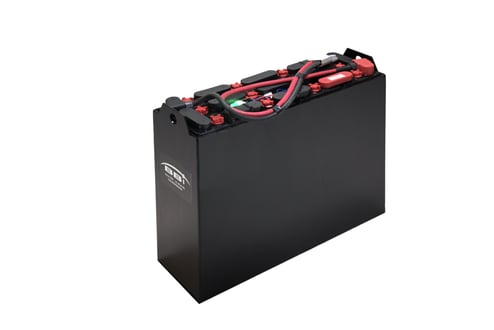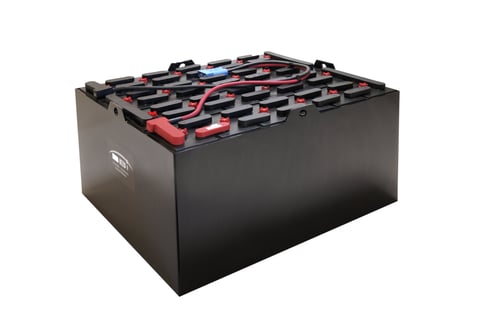
Industrial Batteries Technology: Past and Future
Industrial batteries have become a cornerstone of modern manufacturing and logistics, powering everything from electric forklifts to massive warehouse operations. Understanding the evolution of this technology not only sheds light on how far we’ve come but also helps us grasp where we are heading. In this article, we'll delve into Industrial Batteries Technology: Past and Future, exploring the innovations that have shaped current practices and what we can expect in the years to come.
Industrial Batteries Technology: Past and Future
A Historical Perspective on Battery Technology
The journey of industrial batteries began long before electric forklifts hit the scene or lithium-ion batteries revolutionized personal electronics. The earliest form of 18 volt flat plate forklift batteries battery technology can be traced back to 1800 when Alessandro Volta created the first true battery known as the voltaic pile. This invention laid the groundwork for future electrical storage devices.
As time progressed, lead-acid batteries emerged in the mid-19th century. These were pivotal for industrial applications due to their relatively low cost and ability to deliver high currents. Lead-acid batteries became ubiquitous in various sectors, especially in powering heavy machinery like forklifts. But they weren't without drawbacks—heavy weight and limited cycle life posed significant challenges for users.
In 72 volt flat plate forklift batteries the latter half of the 20th century, nickel-cadmium (NiCd) batteries began to gain traction, particularly in applications requiring deep cycling capabilities, such as in renewable energy systems and backup power supplies. However, environmental concerns regarding cadmium led to a decline in their popularity.
With growing demands for cleaner energy solutions during the late 1990s and early 2000s, lithium-ion technology started making waves. Initially adopted in consumer electronics like smartphones and laptops, lithium-ion batteries quickly proved their worth in industrial applications as well. They offered higher energy densities, lighter weights, longer lifespans, and faster charging times compared to their predecessors.
Innovations Driving Modern Industrial Batteries
So how did we shift from lead-acid to sophisticated lithium-ion technologies? The answer lies in a combination of research breakthroughs and market demand.
Materials Science Advancements: Scientists have been tirelessly working on finding new materials that can improve battery performance. For example, researchers are exploring solid-state batteries which may offer even higher energy densities while enhancing safety by eliminating flammable liquid electrolytes.
Battery Management Systems (BMS): Modern industrial applications utilize advanced BMS that monitor battery health in real-time. This technology optimizes charging cycles and enhances lifespan while providing critical data analytics for better operational decision-making.
Integration with Renewable Energy: Industrial facilities are increasingly looking towards sustainable solutions—solar panels paired with battery storage systems are becoming commonplace. This integration allows businesses to harness renewable energy efficiently while ensuring uninterrupted power supply for machinery like forklifts.
Electric Forklift Revolution: Speaking of forklifts, manufacturers are now focusing heavily on electric models powered by advanced battery technologies instead of traditional gas-powered machines. This shift not only reduces emissions but also contributes to lower operational costs over time.
Recycling Innovations: As the number of used batteries increases globally, proper disposal has become a critical issue. Innovative recycling processes are being developed that recover valuable materials from spent batteries—reducing environmental impact while supporting sustainable practices within industries.
The Future Landscape of Industrial Batteries
Looking ahead at Industrial Batteries Technology: Past and Future, several trends stand out that promise exciting developments:

Emerging Technologies on the Horizon
-
Solid-State Batteries: As mentioned earlier, solid-state technology is poised to enter commercial viability soon. With promises of enhanced safety profiles and higher capacities than conventional lithium-ion cells, industries will likely embrace them enthusiastically.
-
Ultra-Fast Charging Solutions: Quick charging technologies could transform operations drastically; imagine an electric forklift recharging completely within minutes instead of hours! Research is ongoing into novel electrode designs that facilitate rapid ion transport—paving the way for ultra-fast charging capabilities.
-
Smart Batteries: Imagine if your battery could communicate its health status directly with your operation's management system? Smart batteries equipped with IoT sensors will enable predictive maintenance strategies that can significantly minimize downtime.

-
Sustainable Materials: Innovations aren’t just about performance; they’re also about sustainability! Researchers are exploring bio-based materials or alternative chemistries that reduce reliance on rare earth elements or toxic components found in traditional batteries.
Regulatory Influences Shaping Battery Development
As regulations around 12 volt flat plate forklift batteries emissions tighten globally, there's pressure on industries to adopt cleaner technologies rapidly. Governments worldwide are incentivizing companies through grants or tax breaks for transitioning towards electrification—thereby further driving advancements in industrial battery technologies across sectors like logistics, manufacturing, construction etc.
Moreover, as companies aim for net-zero emissions targets by mid-century (or sooner), investments into next-gen battery solutions will only accelerate!
FAQs About Industrial Batteries Technology
1. What types of industrial batteries are commonly used today?
Today’s industrial settings primarily use lead-acid, nickel-metal hydride (NiMH), lithium-ion (Li-ion), and emerging solid-state batteries depending on specific application requirements such as power density needs or environmental considerations.
2. Are electric forklifts more efficient than gas-powered ones?
Yes! Electric forklifts generally offer lower operating costs since they require less maintenance than gas-powered counterparts while producing zero tailpipe emissions—a crucial advantage amid growing regulatory pressures around sustainability.
3. How do I know when my forklift battery needs replacement?
Typically signs include diminished runtime between charges or visible swelling/bulging cases; however consulting your BMS can provide real-time insights regarding overall health status!
4. What impact does temperature have on battery performance?
Extreme temperatures can severely affect efficiency; cold environments may cause reduced output voltage while excessive heat 48 volt flat plate forklift batteries can accelerate degradation rates leading toward shorter lifespans!
5. How can I extend my industrial battery's lifespan?
Regular maintenance checks combined with proper charging practices can significantly enhance longevity; avoiding complete discharges before recharging is essential along with maintaining optimal storage conditions when not in use!
6. What’s next for recycling used industrial batteries?
Innovative methods such as closed-loop recycling processes aim not only at recovering valuable materials but also minimizing waste streams effectively—a promising pathway toward sustainable circular economies!
Conclusion
The story behind industrial battery technology is one marked by innovation driven by necessity—the push towards cleaner energy solutions coupled with advancements across multiple scientific domains has transformed every aspect from design principles through operational strategies within industries worldwide today!
Embracing these changes will undoubtedly shape our futures positively—whether through improved efficiencies derived from electric forklifts powered by cutting-edge lithium-ion cells or pioneering efforts rooted deeply within responsible resource management practices dedicated toward achieving sustainable outcomes moving forward!
With ongoing research poised at breaking boundaries yet again—the best part lies ahead! So let's keep our eyes open because there’s no telling just how exciting things might get when it comes down to Industrial Batteries Technology: Past and Future!